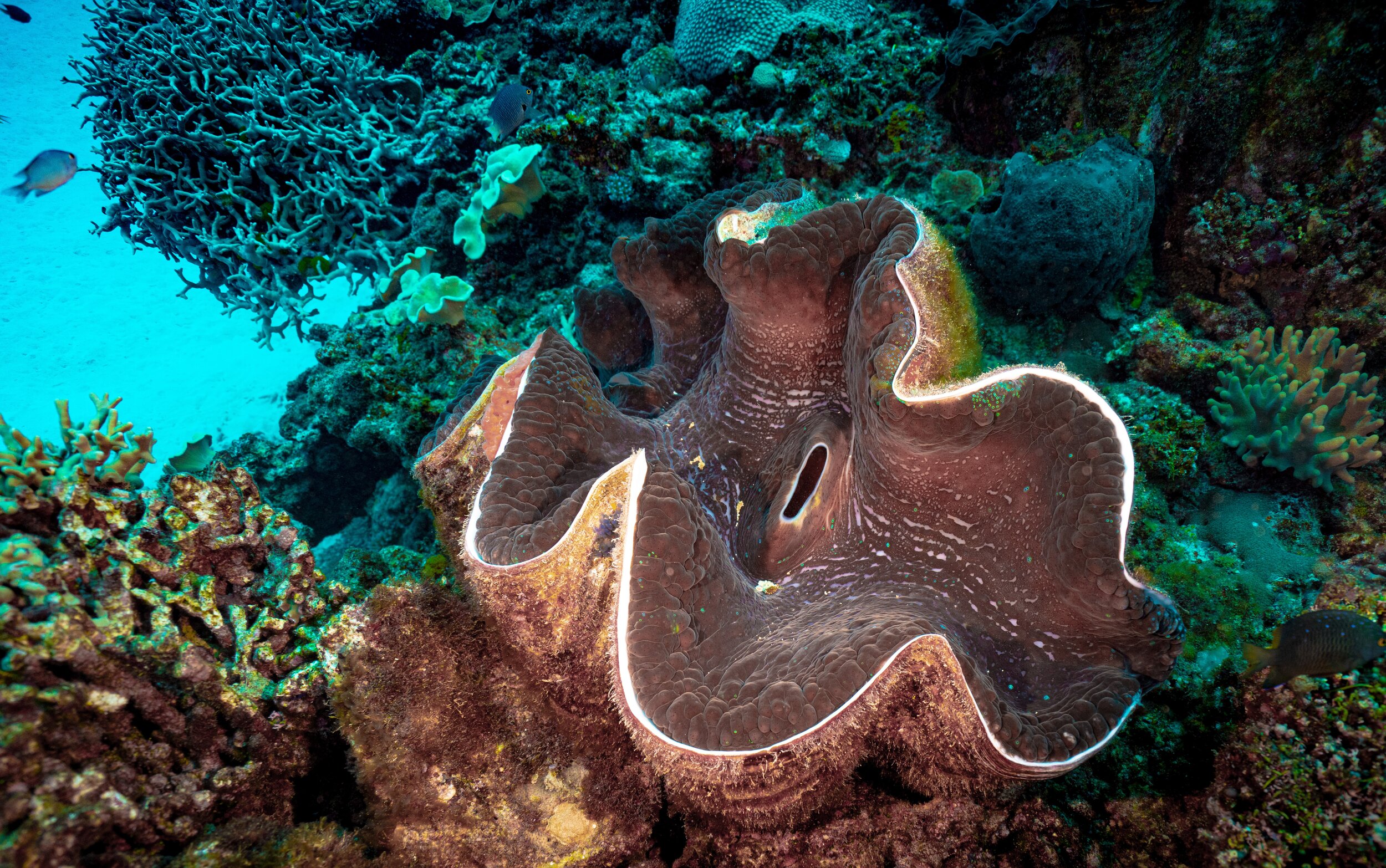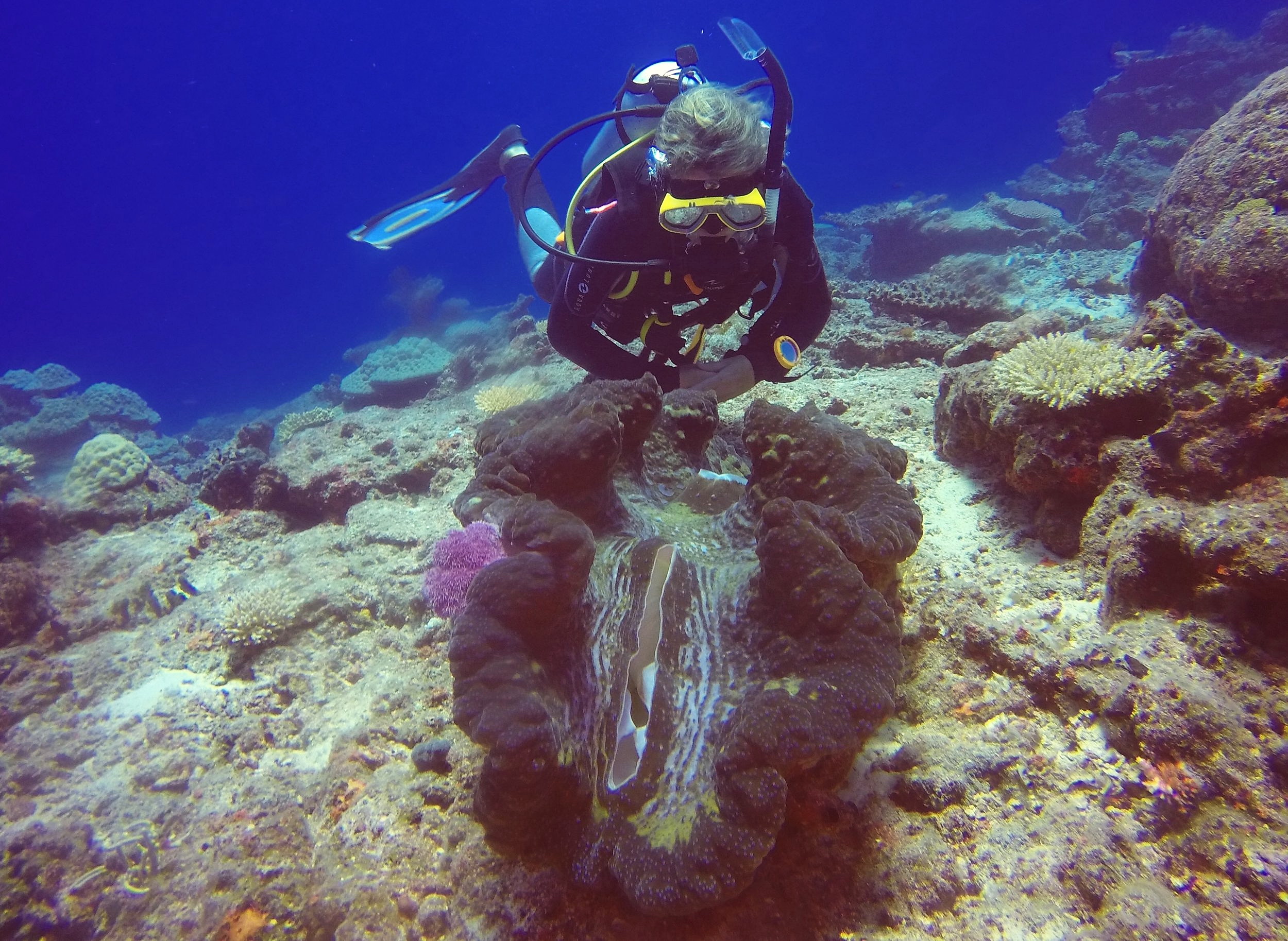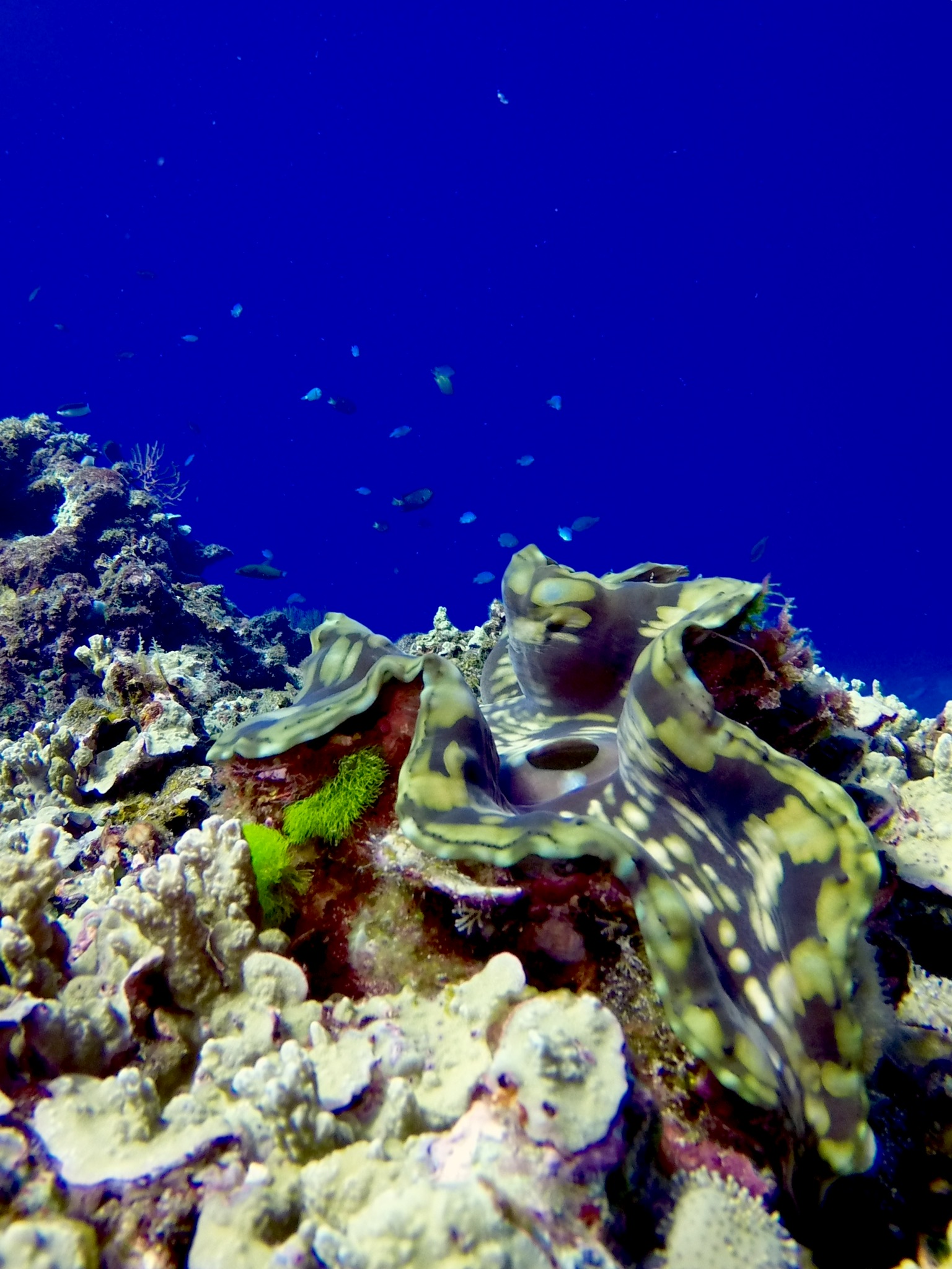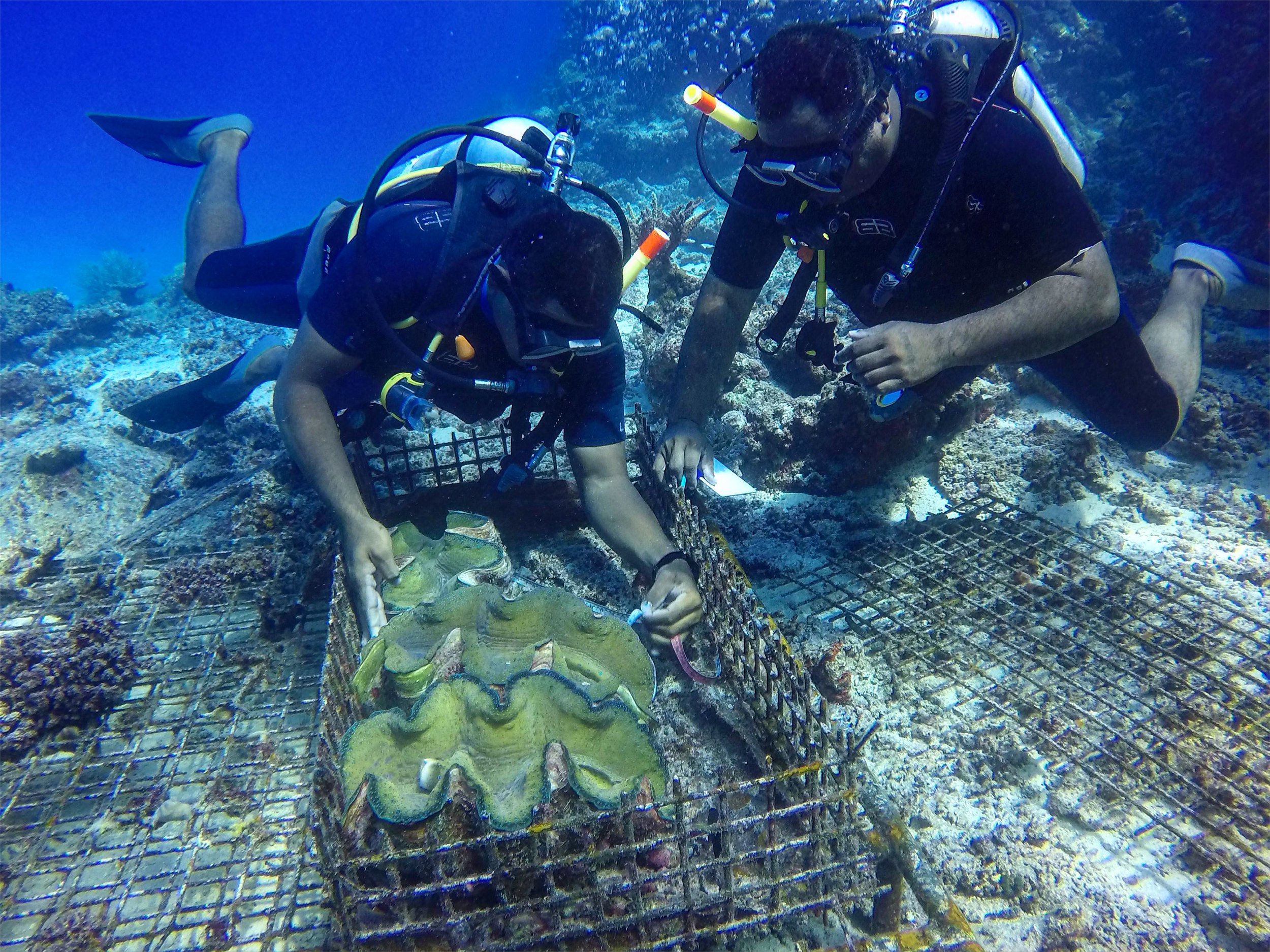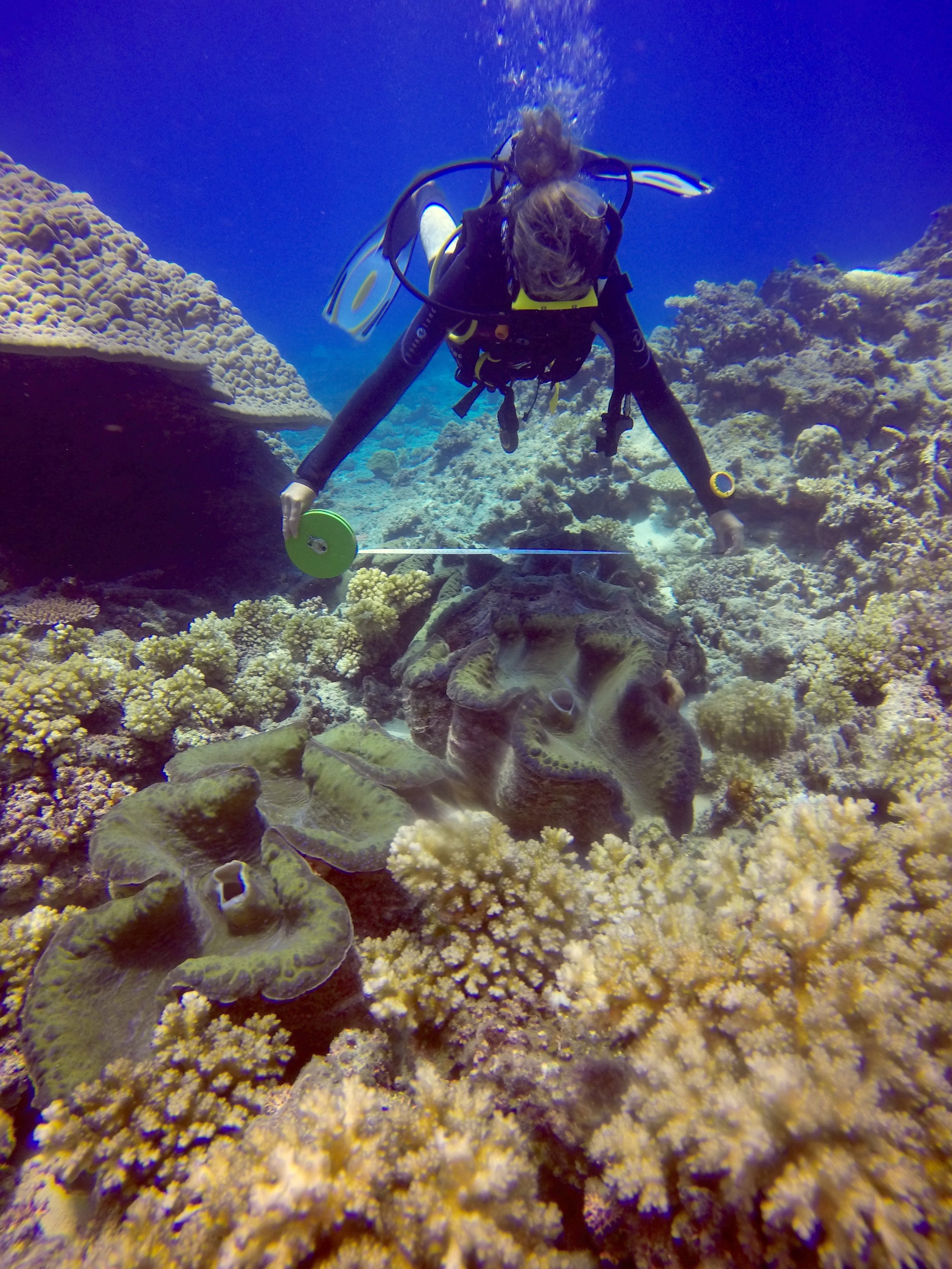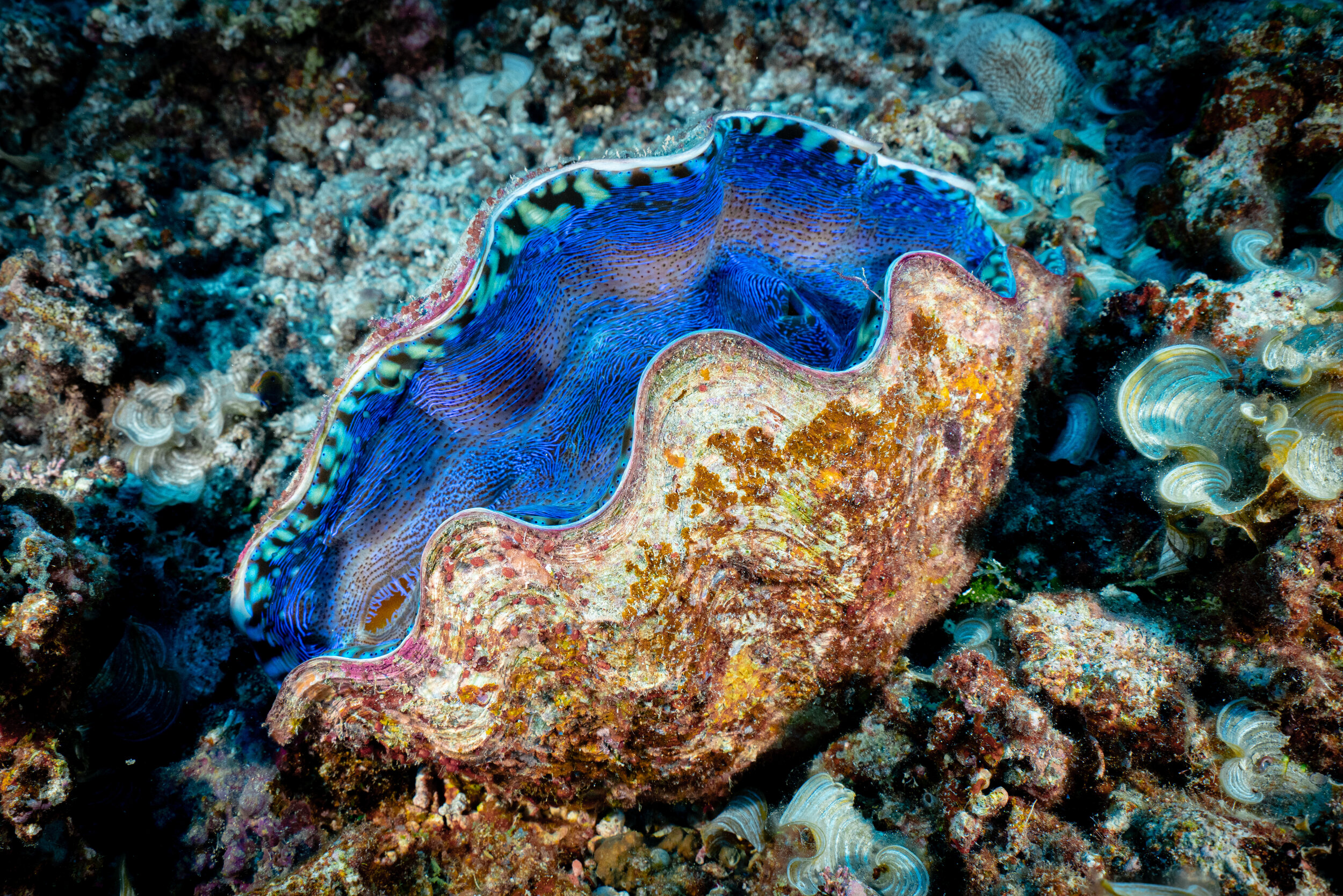
Dive on Fiji's Biggest Giant clams
Giant Clam Project
Tridacna gigas, or the giant clam, is the largest bivalve on earth. It can weigh heavier than 200 kg/ 440 lb and reach more than 2 metres / 6 feet in length. In ancient Fiji the shells grew so big they were used as baths for the children of chiefly families.
Once widespread in the South Pacific, numbers of giant clams have reduced dramatically through over fishing for meat and shell, to the extent that they became extinct in many places, including Fiji.
In the 1980s Tridacna gigas clams were brought from the Great Barrier Reef in Australia to start a Fiji Government-run breeding program on the island of Makogai, and in 2000 Tokoriki Diving project based at Tokoriki Island Resort was the first to reintroduce them to the west of Fiji.
Our clams arrive from the Fisheries Station about the size of a matchbox. They are placed on the reef in metal cages which help protect them from predators such as trigger fish, wrasse and particularly octopi. The cages are regularly cleaned and the clams inspected for parasites. When, after several years, they reach twelve inches/ thirty centimetres, they are moved out onto the reef.
We have clams on two sites. The largest, and oldest, are on the Magic Mushrooms pinnacle, and we have two batches on Tokoriki Wall, our house reef. In addition to the "true"giant clam T. gigas we also have numbers of T. squamosa (fluted giant clam) and the beautiful T. derasa (smooth giant clam). Growing wild on the reef is the smaller T. maxima (maxima giant clam).
The aim of the project is to create a colony of clams in a protected area to allow successful breeding. This will hopefully allow regeneration of the species not only on the reefs around Tokoriki but also across the west of the country.
Giant clams reproduce by releasing first eggs and then sperm into the ocean currrents. As they cannot fertilize their own eggs, grouping large numbers of mature clams together hugely increases the numbers of viable eggs.
A fertilized egg will float on the ocean current for twelve hours before hatching takes place. The resultant larva develops a foot which allows it to move along the sea floor, and can also swim. While mortality is extremely high, the tiny clams can cover many miles in the week before they settle on the reef, allowing potential colonisation of large areas of sea.
The baby clams need a great deal of luck. If they fall into deep water, they will not receive enough sunlight to survive. If they are too shallow, wave action will prevent them from attaching themselves to the reef, and if they land on sand, they will soon suffocate. If a clam is fortunate enough to find itself on a piece of protected reef of the right depth, it now has to run the gauntlet of a wide range of predators, from tiny snails and boring sponges to massive moray eels and ten foot nurse sharks. Then there are the dangers of huge swells from winter storms and summer cyclones.
Given all of this, by the time a clam reaches sexual maturity after six or seven years it has been through a lot. Now it's main threat is from human hunting, because Pacific islanders just love to eat fresh vasua. This is where our project will really help. A giant clam can live for over a hundred years, and release many millions of eggs through it's lifetime. So assisting the clams through their first years - and sadly still losing many along the way - and then protecting them as adults in breeding colonies so that their offspring can repopulate the local area for the benefit of species and fisherman alike.
+679 972 4068

